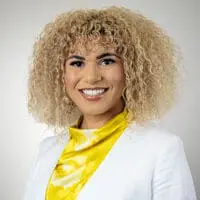Publication
House Settlement
One of the most significant legal battles in collegiate athletics recently received another boost. On October 7, 2024, the proposed House v. NCAA settlement received preliminary approval from Judge Claudia Wilken in the Northern District of California (House settlement).1 With its final approval hearing set for April 7, 2025, this decision is poised to shape the future of collegiate athletics for generations to come. Many view it as a long-overdue improvement in the treatment and compensation of student-athletes. For others, it may destroy their collegiate careers. Ultimately, the outcome of this settlement will likely define the future landscape of college sports.
Pending final approval, the House settlement would provide: (1) approximately $2.8 billion of back-pay to former Division I student-athletes; (2) revenue-sharing in college athletics; (3) changes to college team roster sizes; and (4) a collegiate name, image, and likeness (NIL) enforcement agency.2
How did we get here?
In 2020, just before the NCAA altered its NIL rules, former Arizona State men’s swimmer, Grant House, sued the NCAA for restricting NIL payments to student-athletes. He claimed, among other things, that the NCAA and Power Five Conferences violated antitrust laws by limiting payments to student-athletes for their NIL and athletic participation.
Alongside injunctive relief, House sought backpay from NIL earnings related to broadcast revenue, video game royalties, and third-party NIL transactions. On September 5, 2024, Judge Wilken initially rejected the proposed settlement because of restrictions on third-party NIL agreements and concerns regarding definitions for “booster” and “pay-for-play.” Shortly thereafter, the parties submitted a revised settlement, which, in turn, was granted by Judge Wilken on October 7, 2024.
So, the House settlement received preliminary approval. What does this mean for collegiate athletics?
$2.8 Billion in Back-Pay to Division I Student-Athletes
Pending final approval, roughly 400,000 student-athletes would be paid $2.8 billion in retroactive damages for lost NIL revenue dating back to 2016. The settlement dollars will be provided by the NCAA, conferences, and individual institutions as follows:3

Notably, these payments will not be evenly distributed amongst student-athletes. Rather, about seventy-five percent (75%) of the funds would be awarded to football players, twenty percent (20%) to men’s and women’s basketball student-athletes, and the remaining five percent (5%) to student-athletes in the remaining sports.
Revenue-Sharing in College Athletics
The House settlement also outlines a revenue sharing model between college athletic departments and student-athletes. During the ten-year settlement term, athletic departments will be allowed to voluntarily share up to twenty-two percent (22%) of the revenue generated by the Power Five Conferences (from media rights, ticketing sales, and sponsors) with student-athletes. Starting in the 2025-2026 academic year, this is expected to be about $20 million dollars per university. After that, the total revenue will increase each year through an automatic escalation requirement.
Although the settlement is still awaiting final approval, universities have started making changes to brace for this financial impact. While many universities are considering cutting certain sports programs and making other budget cuts, Cal Poly became one of the first to announce the programs it has cut.4 In a letter to the university, Cal Poly’s President announced that men’s and women’s swimming and diving programs were discontinued effective immediately on March 7, 2025. President Armstrong specifically cited House and the resulting $450,000 annual loss to Cal Poly’s sports programs as the reason for these program cuts.
The financial impact of House cannot be overstated. Angela Suggs, Florida A&M University’s vice president and director of athletics, said, “When you say there’s a $20.5 million cap, well, that’s more than our annual budget.”5 Many universities will struggle to keep up with this revenue share, not to mention all the other financial implications of the House settlement.
Changes to College Team Roster Sizes
One potential — and unintended — consequence of an approved settlement includes an elimination of roster spots.6 Under previous NCAA rules, most sports had scholarship limitations, but not strict roster caps. However, pursuant to the House settlement, scholarship constraints will be removed and replaced with team-wide roster caps.
The new equivalency model allows schools to increase the number of scholarships, giving them the option (but not the requirement) to offer scholarships to every student-athlete on a team. While this initially seems like it would expand opportunities for student-athletes, it will actually reduce the number of roster spots available, as each sport will now have a fixed roster cap. As a result, thousands of student-athletes — especially walk-ons and those on partial scholarships — could lose their spots. For example, collegiate swimming programs typically have about 40 swimmers per team. Under the House settlement, this number will be capped at 30 per team. Broadly speaking, it’s estimated that the 68 universities in Power Five Conferences will cut about 3,000 roster spots.
Collegiate NIL Enforcement Agency
Through renewed enforcement of NIL rules, the House settlement could allow the NCAA and Power Five Conferences to form a designated, NIL enforcement agency. This new mechanism, aimed at eliminating pay-for-play payments to student-athletes, would focus on the following NIL deals:
- (1) Payments worth more than $600;
- (2) Transactions affiliated with NIL collectives;
- (3) Those involved with recruiting student-athletes; and
- (4) Payments from families who, over their lifetime, contributed more than $50,000 to an athletic department.
The primary focus of the NIL agency would be to eliminate “faux” NIL deals — those payments to student-athletes that act under the guise of NIL but function as pay-for-play. As a result, the NIL agency would limit NIL collectives through additional oversight on significant NIL deals.
Here’s What’s Next.
The House settlement is far from over; the Court’s final approval hearing is coming up on April 7, 2025. Ironically, this is the same day as the NCAA Men’s Basketball Championships — one of the largest revenues streams for institutions, conferences, and the NCAA.
The House settlement only resolves a few disputes, while leaving several other legal issues open. For example, it does not address how Title IX will impact financial distributions to men’s and women’s teams. We expect to see more universities cutting non-revenue generating sports programs to offset the financial impact of House and keep resources balanced.
Additionally, House may impact student-athletes’ status as employees, especially in light of the recent Johnson decision.7 In Johnson, former student-athletes claimed that under state and federal legislation, they should be classified as “employees.” The Third Circuit found the Plaintiffs alleged a significant employment relationship. As a result, it created a new test for student-athlete classification under the Fair Labor Standards Act. Now, with House, this new test may allow courts to find student-athletes as employees.
All eyes are on House and college athletics as these issues continue to develop.
Footnotes
-
In re College Athlete NIL Litig., No. 4:20-cv-03919 (N.D. Cal.).
-
Amended Stipulation and Settlement Agreement, In Re: Collegiate Athlete NIL Litigation, No. 4:20-cv-03919 (N.D. Cal.).
-
Ross Dellenger, NCAA, Power Five conferences vote to approve $2.8B settlement in House, Hubbard and Carter cases, Yahoo! Sports (May 23, 2024) https://sports.yahoo.com/ncaa-power-five-conferences-vote-to-approve-28b-settlement-in-house-hubbard-and-carter-cases-001736810.html#:~:text=Under%20the%20approved%20framework%2C%20the,in%20contributions%20to%20the%20damages
-
Jeffrey D. Armstrong, Letter from President Armstrong on Budget and Organizational Changes, Cal Poly Office of the President (Mar. 7, 2025) https://content-calpoly-edu.s3.amazonaws.com/president/1/documents/Announcements/03.07.2025%20Follow-Up%20on%20Budget%20and%20Organizational%20Changes%20vs%202.pdf
-
Andrew Atterbury, Other states are preparing for the House NIL settlement. But can Florida schools compete?, Politico (Mar. 16, 2025) https://www.politico.com/news/2025/03/16/house-nil-settlement-florida-schools-00231500
-
Ross Dellenger, Who is House in House v. NCAA settlement? Meet the man behind the lawsuit that will change college sports forever, Yahoo! Sports (Dec. 30, 2024) https://sports.yahoo.com/who-is-house-in-house-v-ncaa-settlement-meet-the-man-behind-the-lawsuit-that-will-change-college-sports-forever-165955719.html.
-
Johnson v. Nat’l Collegiate Athletic Ass’n, 108 F.4th 163, 175 (3d Cir. 2024).
About Snell & Wilmer
Founded in 1938, Snell & Wilmer is a full-service business law firm with more than 500 attorneys practicing in 17 locations throughout the United States and in Mexico, including Los Angeles, Orange County, Palo Alto and San Diego, California; Phoenix and Tucson, Arizona; Denver, Colorado; Washington, D.C.; Boise, Idaho; Las Vegas and Reno, Nevada; Albuquerque, New Mexico; Portland, Oregon; Dallas, Texas; Salt Lake City, Utah; Seattle, Washington; and Los Cabos, Mexico. The firm represents clients ranging from large, publicly traded corporations to small businesses, individuals and entrepreneurs. For more information, visit swlaw.com.



